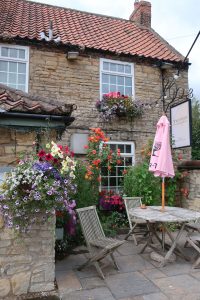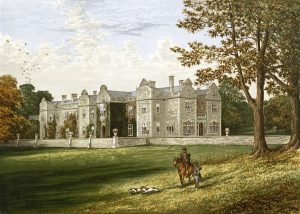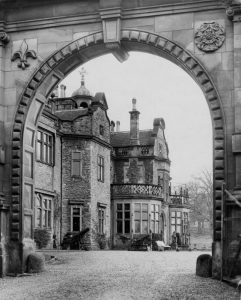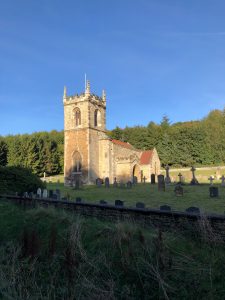The parish of Brantingham is situated in what was once the wapentake of Harthill (Hunsley Beacon division), part of the historical East Riding of Yorkshire (see maps in Introduction). Before the 1832 parish boundary changes it included the sub-parishes and localities of Ellerker and Brantinghamthorpe.
A Roman villa was discovered in 1941 to the south-east of Brantingham. Excavations in 1961 revealed its remains, including a large room with a mosaic floor and a corridor which led to four other rooms. The site attracted notoriety in 1948, when a team of archaeologists from the Hull and East Riding Museum prepared a first set of mosaics for removal. Overnight it was stolen and although the second set was safely transferred to the museum, where it can still be seen, the first one was never recovered.
Brantingham is too widely spread to be the quintessential English village, but it has many green spaces, a pond, a church and a pub. The latter is a former coaching inn on the road west out of Hull and took its present name, the Triton Inn, in the 1860s after the triton in the family crest of the Sykes family. Brantingham was originally the seat of the noble family of Brantingham, holders of high offices of the church and state, the Fauconbergs also had lands there, as did the Broomfleet family in the late 1400s.
 |  |  |  |
It was Anthony Smethley, another one time lord of Brantingham, who built the first Brantinghamthorpe Hall, known locally as Thorpe Hall, which stands on a high terrace with a commanding view over the Humber estuary, the Vale of York and Lincolnshire The present house is a long uneven structure of grey stone, broken by gables and balustrades, and stands on the site of the original Elizabethan house of which only the core and the porch (c1567) survive. The rest of the house is Victorian. The park and garden were laid out between 1835 and 1855. The Sykes family was a one time owner of the Hall.

The church of All Saints is situated in a valley a little north of the village. Its style is partly Norman and partly Perpendicular and its structure cruciform, with a nave, chancel and transept. It is attached to an embattled and pinnacled tower which houses three bells. The main part was rebuilt in 1872 and principally financed by Christopher Sykes, esq. The eastern stained glass window is in memory of Mary Elizabeth Sykes, and in the south transept is an ancient brass indicating the burial place of Anthony Smethley who died in 1578.
There were Pickerings in the parish of Brantingham in the 17th and 18th centuries, probable relatives of the Pickerings of Oswaldkirk, as Anthony Pickering of the 15th generation of this branch was clerk to Richard Smethley, the father of Anthony Smethley (see Bishop Burton for further details on the Pickering-Smethley connection). However, it was the Puckerings of Goodmanham who left their mark in the late 18th and the 19th centuries, when Simon Puckering and his family took over a farm in Ellerker.
Sources:
https://www.genuki.org.uk/big/eng/YKS/ERY/Brantingham
https://en.wikipedia.org/wiki/Brantingham
https://en.wikipedia.org/wiki/Brantingham_Roman_villa
https://opendomesday.org/place/SE9429/brantingham
History and Topography of Yorkshire, vol. 2, York, Ainsty, East Riding, pp. 529-31: https://books.google.fr/books?redir_esc=y&id=unEKAQAAMAAJ
A New and Complete History of the County of York, vol. 2, pp.107: https://books.google.fr/books/about/A_new_and_complete_history_of_the_county.html?id=zdMuAAAAMAAJ
Bulmer’s History, Topography and Directory of East Yorkshire with Hull 1892, pp. 558-559: https://specialcollections.le.ac.uk/digital/collection/p16445coll4/id/324025
A History of South Cave and of other Parishes in the East Riding of the County of York: https://web.archive.org/web/20091003154011/http://members.pcug.org.au/~bthompso/southcave/openff.pdf
Brantingham Thorpe: https://www.c82.net/seats/seat/brantingham-thorpe
Brantinghamthorpe: https://britishlistedbuildings.co.uk/101347036-brantinghamthorpe-brantingham
Brantinghamthorpe Hall: https://www.parksandgardens.org/places/brantinghamthorpe-hall
Church of All Saints: https://historicengland.org.uk/listing/the-list/list-entry/1103351?section=official-list-entry
